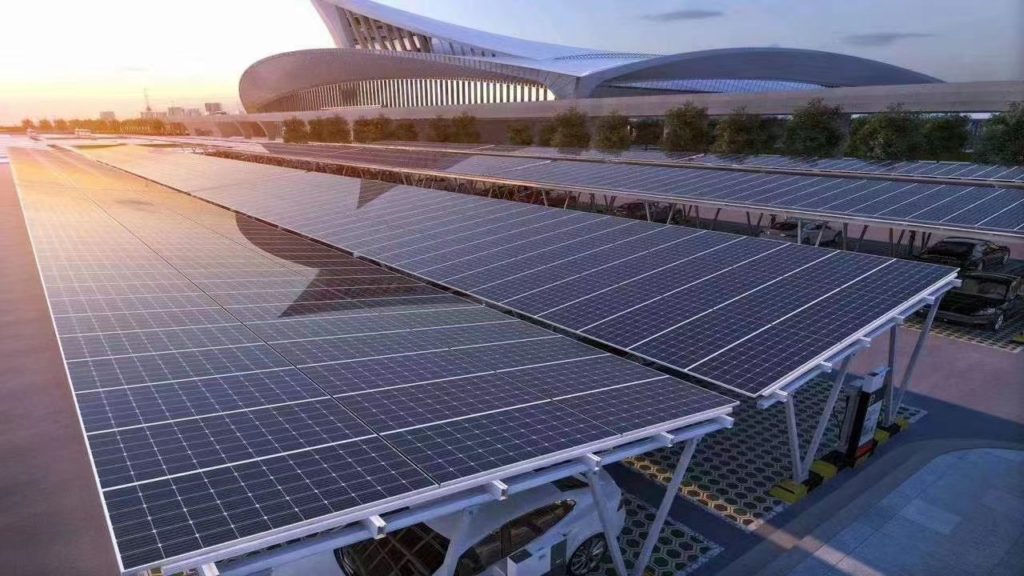When it comes to solar energy, it is undeniable that last year has been a huge blast in the solar market of Vietnam. In the meantime, self-consumption has been mentioned multiple times throughout the discussions of not only our energy leaders, but also people in the industry in general.

So what is Self-consumption?
After the Feed-in-Tariff deadline on the last day of 2020, investors are now waiting for the next policy from the Government.
Any energy that your system produces will go first into your home to power any devices that happen to be running – thus reducing the amount of energy you have to purchase (‘import’) from your electricity retailer (EVN – in Vietnam). If your solar system produces more energy than your household can consume at a given moment (e.g. if you’re not home), the excess solar is automatically sent back into the grid. This ‘exported’ solar energy is what earns you the low feed-in rates mentioned above.
Why should you choose Self-consumption?
Self-consumption of photovoltaic (PV) renewable energy is the economic model in which the building uses PV electricity for its own electrical needs, thus acting as both producer and consumer, or prosumer. In this model, the PV-generated energy is consumed instantaneously as it is being produced.
Solar self-consumption is becoming the preferred economic model for several reasons:
- It offers greater economic benefits and better control of energy bills
- Self-consumption enables buildings to consume their own solar energy
- Self-consumption promises greater independence from the grid and future electricity rate variations
Self-consumption for factories & warehouse roofs
The roofs of factories are often the ideal place to install a solar panel. As factories are energy-intensive buildings, installing a solar PV system on the roof of a factory ensures free power can be generated to run everything underneath it. While reducing energy costs, a solar PV installation has the added benefit of demonstrating Corporate Social Responsibility thanks to its environmental credentials.

As energy efficiency rises to the top of the agenda for warehouse and logistics firms, more and more are seeing the benefits of solar PV. Installing solar PV on warehouse roofs means generating free electricity for the warehouse and adjacent buildings, such as offices.
Warehouse and logistics firms can significantly reduce their energy bills with a solar PV system. Energy bills are typically responsible for around 15% of operating costs in a warehouse facility, due to temperature control systems and lighting. By adding solar panels, which generate their own free electricity, these energy bills can be substantially reduced.
There are 3 main types of Self-consumption
- On-grid: Any excess solar power that you generate is exported to the electricity grid and you usually get paid a feed-in-tariff (FiT) from EVN for the energy you export.
- Off-grid: Excess energy is stored in Energy Storage System (ESS – commonly known as battery), and will be used later on.
- Hybrid: Store solar energy that is generated during the day and used during the night. When the stored energy is depleted, the grid is there as a back up, allowing consumers to have the best of both worlds

How can you maximize your solar self-consumption?
If there is no one around to use electricity during the day, there are a number of approaches you can use to try to ensure that your solar energy is being self-consumed:
- Timers – are a cheap way to increase your daytime energy consumption, but they do not take into account changes in the weather.
- Solar diverters – redirect your excess solar energy into your hot water tank, but they can be limited in their application and are usually not worthwhile if you already have an affordable, controlled-load connection.
- Batteries – are a fantastic, versatile option for storing excess solar energy for use later in the day; however, they are still very expensive.
- Energy management systems – vary in their sophistication, but on a basic level allow you to monitor and control devices in your home; a great EMS will integrate seamlessly with your home’s energy consumption patterns and solar energy production.

